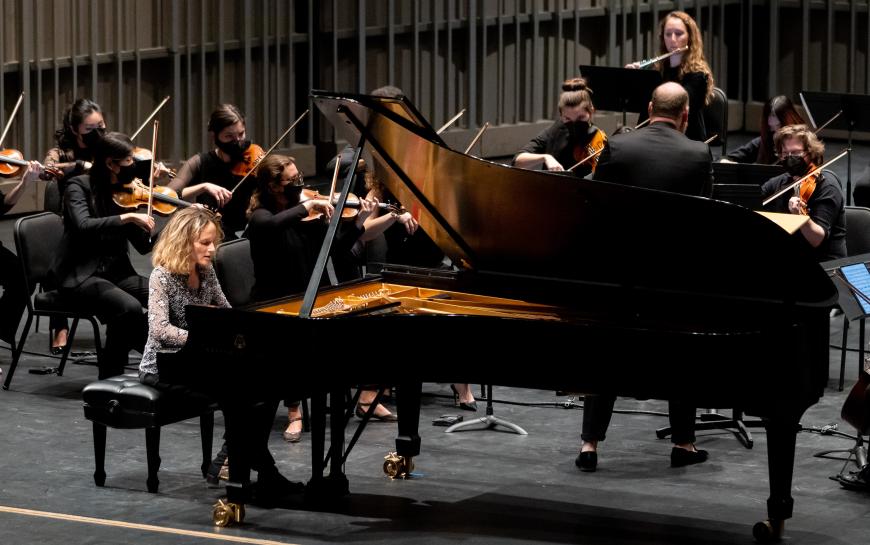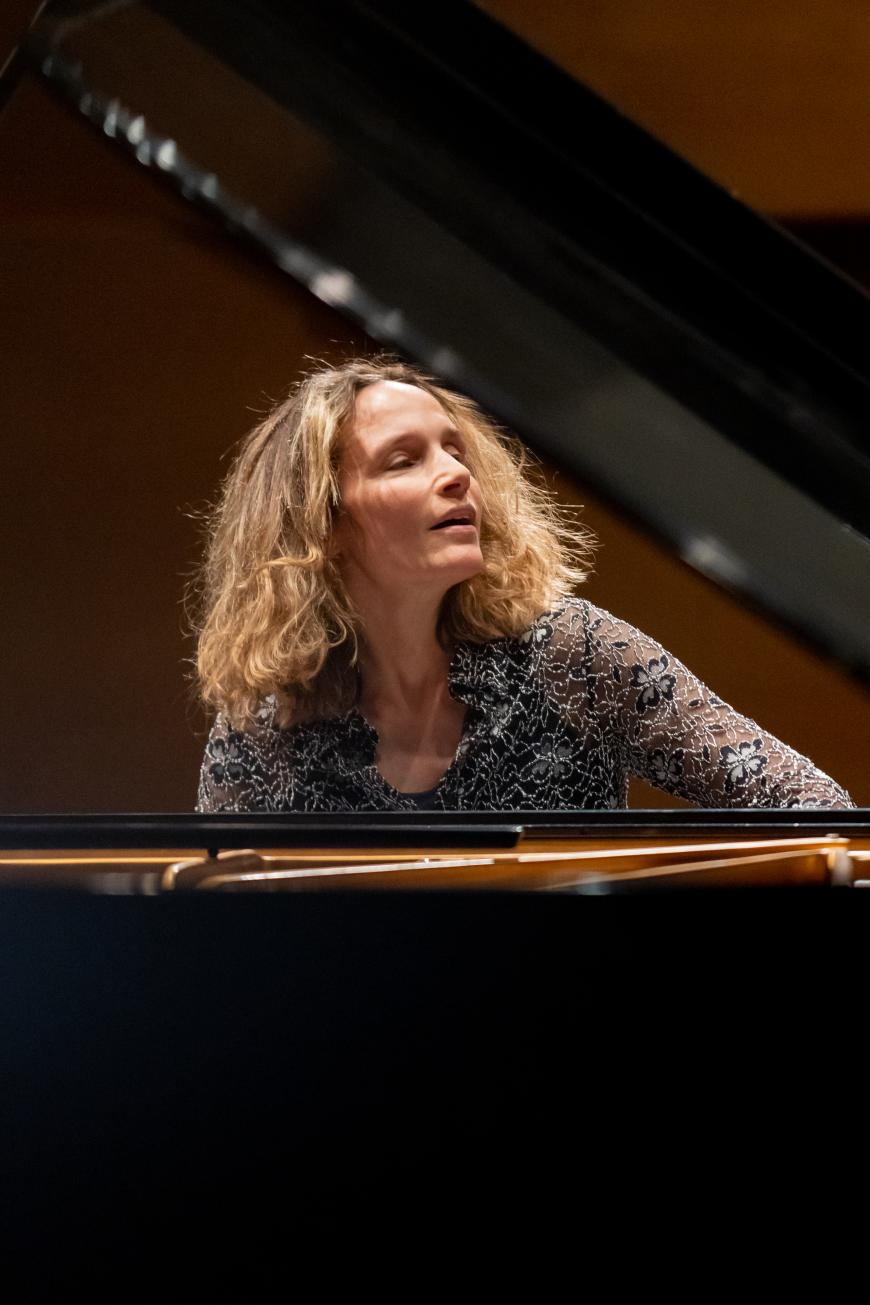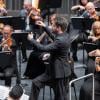
Hélène Grimaud, the French-born pianist now living in Westchester County, N.Y., was a bit ahead of the curve in championing the music of Ukrainian composer Valentin Silvestrov. Prior to the COVID pandemic, she was juxtaposing Sturm und Drang Mozart with some of Silvestrov’s gentle pieces for piano and string orchestra, gathering them together on an album, The Messenger, that was released by Deutsche Grammophon in fall 2020.
About a year and a half later, Vladimir Putin invaded Ukraine. The now 85-year-old Silvestrov fled Kyiv for Berlin — and suddenly he became a hot property outside the cloistered world of contemporary classical music, hailed as Ukraine’s greatest living composer. He has been quoted in Deutsche Welle comparing Putin with Osama bin Laden (“he is a terrorist like bin Laden, only a thousand times more powerful”).
So Grimaud’s Mozart/Silvestrov project now has new, unexpected significance as she revisits it on the road, including a stop at The Soraya at CSU Northridge on Thursday night, Jan. 26. The idea was to start in the first half with Mozart’s most angst-ridden piano concerto, No. 20 in D Minor, K. 466, and then blow all of the tension away with peaceful, stress-free Silvestrov in the second half, implying an escape from a war-torn world into nostalgic stillness.
The concert was also a unique opportunity to hear Christopher Rountree and his ensemble Wild Up tackle Mozart instead of their usual wildly eclectic fare. Wait, did I just say “unique”? Well, not quite, for Rountree and company had already performed the Finale from Act 4 of Mozart’s The Marriage of Figaro, repeated over and over and over at REDCAT for 12 hours, as part of the Los Angeles Philharmonic’s Fluxus Festival in 2019. They must be familiar with the style by now.
If you just trusted your eyes, you would have expected a sharp-edged pair of outer movements in the Mozart concerto, with Rountree applying his athletic, crisply angular gestures and Wild Up delivering what he was ordering up. But here, the hall may have played a part in toning down the ensemble’s sharp accents, and when Grimaud tried to convey some vehemence, the results seemed blurred, lacking in definition. At softer volumes, though, Grimaud could apply all kinds of subtle nuances and rubatos that made the piano sing. The first part of the famous second movement was especially effective, entering a trance-like state that hinted of things to come after intermission.

The brief sampling of Silvestrov works in the second half were all of a piece, related somewhat closely in sound to the spiritual world of a fellow Eastern European, Arvo Pärt. Yet this time, Silvestrov’s slow tempos, deliberate simplicity, and whispering volume levels not rising above a mezzo-piano played to The Soraya’s strengths, a resonant hall working with the music instead of dampening it. With Grimaud and Wild Up now on their own in Silvestrov, the music blended together in a seamless, virtually uninterrupted trance right to the last note, coming off far more effectively in a concert hall with a communing live audience than on the 2020 recording.
In The Messenger, for piano, strings, and synthesizer (1996), one can feel the ghostly yet friendly presence of Wolfgang Amadeus himself in slow-motion paraphrases, quotes, and responses that blur and fade (the most obvious one to me was a recurring tune from Mozart’s Oboe Concerto). The sustaining pedal on the piano was pressed firmly down much of the time, per the score, and a synthesizer provided the pink noise simulating wind that could be heard at the beginning and near the end of the piece.
A Franz Schubert wedding waltz and a fragment from Richard Wagner’s Parsifal were the points of departure for Silvestrov’s Two Dialogues With Postscript (2001–2002), with consoling, songful textures continuing the mood established by The Messenger. In the second of the work’s three short movements, Grimaud rattled the bass strings of the piano to create a distant thunder effect. A pair of slight 3½-minute Bagatelles by Silvestrov (Nos. 1 and 2) served as solo piano preludes to each of the ensemble pieces.
While this program worked well within its context, it shouldn’t be taken as a summary of Silvestrov’s output, which includes nine symphonies and a host of chamber, piano, and vocal works. For further listening, try the expansive Symphony No. 6, with Andrey Boreyko leading the SWR Stuttgart Radio Symphony (ECM New Series), which uses similar tactics to produce a much greater harmonic and emotional range than anything that Grimaud and Wild Up served up.



